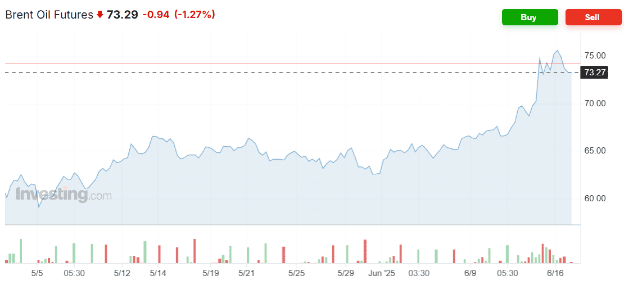How Middle East Tensions and Fed Policy Uncertainty Could Reshape Risk Appetite This Week
As we enter the third week of June 2025, financial markets face a complex mix of geopolitical instability and economic uncertainty. The Israel-Iran conflict has played havoc on oil prices, while Federal Reserve officials navigate between persistent inflation pressures and signs of labor market softening. This week's economic calendar, combined with ongoing Middle East developments, will test whether markets can maintain their recent resilience or succumb to mounting volatility. 
Investors, asset managers, and policymakers alike will be parsing both geopolitical developments and economic data for signals that could reshape Fed policy expectations, trigger sector rotations, and reprice risk across asset classes.
Let's explore the key dynamics that could define this week's market narrative.
Last Week's Reality Check: The Middle East Can Still Provide Global Disruption
Last week, the market seemed to be on course to grind its way to another gain when news from the Middle East had other thoughts. First, word came that the US was partially evacuating its embassy in Iraq. Within roughly a day of the news, Israel launched a unilateral surprise strike against Iran’s leadership and nuclear weapons infrastructure. The strikes appeared to be generally effective in hitting their intended targets, getting past much of Iran’s defenses. Iran, in turn, responded with missile strikes through the night in Tel Aviv, landing a number of strikes of their own.
Iran has since signaled that they wish no further escalation of the war. Israel has not, as yet, indicated a substantial desire to stop at this point instead of going farther in eliminating the threat of an Iranian nuclear weapon and precipitating a regime change in Tehran. We will see, but the market seemed to rapidly price in de-escalation today with oil and gold prices falling as risk assets popped.
Three Market-Moving Developments That Could Define the Week
Monday-Tuesday: Geopolitical Risks Come Into Focus
The Israel-Iran conflict has entered its fourth day, with Israel targeting Iranian nuclear facilities and Iran retaliating with missile strikes on Tel Aviv and Jerusalem. At least 78 people were killed in Israel's initial strikes on Iran, including senior military officials, with more than 320 injured, while subsequent Iranian retaliation has claimed additional lives on both sides.
The market implications extend far beyond immediate energy price spikes. With airlines suspending flights to Tel Aviv, Tehran and other regional airports, oil companies and shipping firms are scrambling amid growing concerns that key trade routes like the Strait of Hormuz could be disrupted. Even the suggestion of such disruptions has already sent shockwaves through global markets.
For investors, this creates a classic stagflation setup where geopolitical tensions drive energy costs higher just as economic growth faces headwinds. Energy-intensive sectors face margin compression, while defensive plays and hard assets may see renewed interest. The challenge is that traditional safe-haven assets offer limited protection when bonds face inflation risk and equities face both geopolitical and policy uncertainty. Gold appears to be the safe haven play.
With all that being said, and as we noted at the outset, Iran signaling their desire not to escalate further has calmed jittery markets, bringing about a sizable rally today. We will see if the good news holds.
Wednesday-Thursday: Fed Officials Navigate Competing Pressures
Federal Reserve officials are expected to maintain their wait-and-see approach with respect to interest rates, but recent developments have complicated their calculus significantly. Signs of labor market softening, with jobless claims continuing to rise, suggest some economic weakening. In addition, the latest CPI and PPI reads came in cooler than expected, providing some with the faith that inflation has been sufficiently beaten, and Fed easing is warranted. However, energy-driven inflation pressures from geopolitical tensions – along with the anticipated flow through impacts of tariffs - threaten to derail months of disinflation progress.
The Fed finds itself in an increasingly difficult position. Just as policymakers were gaining confidence about potential rate cuts later this year, the combination of tariff impacts, BBB-driven fiscal stimulus, and energy price volatility has created competing pressures. Any hawkish shift in Fed communications this week could trigger significant market volatility, particularly in interest-sensitive sectors like real estate and technology.
Market participants will scrutinize any Fed official speeches or interviews for hints about how the central bank weighs geopolitical inflation risks against domestic economic softening. The "higher for longer" narrative may gain renewed credence if energy prices continue climbing.
Conclusion: When Multiple Uncertainties Converge
This week represents a stress test for markets navigating simultaneous geopolitical, monetary policy, and economic uncertainties. The Israel-Iran conflict has already demonstrated markets' sensitivity to supply disruption risks, while the Fed faces the difficult task of balancing inflation concerns against growth headwinds.
The question isn't whether volatility will increase. It's whether markets can maintain their recent resilience as reasons for a bit of skepticism creep up. We may get critical clues this week.

